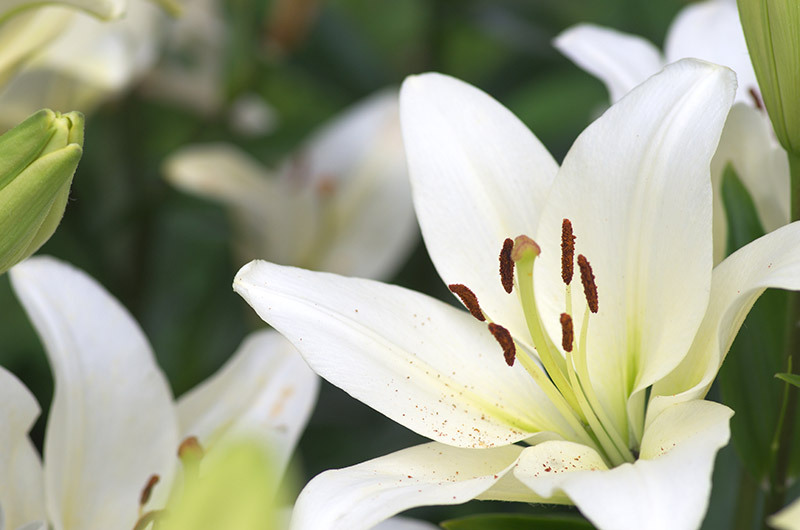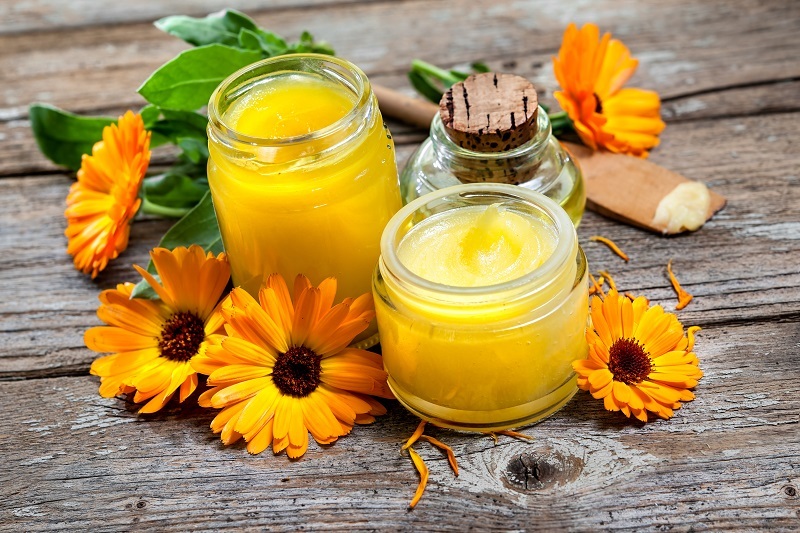Secrets to Long-Lasting Cut Flowers
Posted on 22/08/2025
Secrets to Long-Lasting Cut Flowers: Extend the Life of Your Floral Arrangements
Is there anything more uplifting than a fresh bouquet adorning your home? Whether it's a hand-picked garden collection or a store-bought arrangement, fresh cut flowers offer color, fragrance, and instant joy. However, the beauty of flowers often fades quickly--leaving wilted petals and water-ringed vases in their wake. The good news? You can dramatically extend the life of your blooms with a few simple strategies!
Why Do Cut Flowers Wilt?
Understanding the science behind cut flower longevity is the first step. Once flowers are cut from their plants, they lose their root system--their lifeline to water and nutrients. Bacterial growth in the vase, air blockages in stems, dehydration, and exposure to light and heat further reduce their vase life. Luckily, with the right care, you can keep blooms vibrant for up to two weeks or more!

How to Make Cut Flowers Last Longer: Top Secrets Revealed
1. Choose the Freshest Flowers
- Inspect Petals and Stems: Always select flowers with firm, upright stems and unblemished petals. Avoid blooms with brown spots or slime.
- Check for Tight Buds: Many flowers (like roses, lilies, and tulips) last longer when purchased or picked just before their buds open completely.
- Sniff the Water: In-store bouquets should be in clean, odorless water. Smelly water is a sign of bacterial build-up, which can cut bouquet life short.
2. Properly Prep Your Vase
- Cleanliness Matters: Wash your vase thoroughly with hot, soapy water to eliminate bacteria. Rinse well to ensure no residue is left.
- Rinse With Vinegar: For extra protection, swish a mix of vinegar and water around your vase before filling--it can help kill remaining germs.
3. Cutting Stems the Right Way
- Use Sharp Tools: Always use a sharpened knife or clean garden shears. Dull or dirty tools crush stems and introduce bacteria.
- Angle Your Cut: Cut stems at a 45-degree angle underwater if possible. This increases the surface area for water absorption and prevents air from entering the stem's vascular system.
- Trim Regularly: Re-trim stems every 2-3 days to keep water uptake pathways fresh and open.
4. Remove Lower Leaves
- Prevent Decay: Any foliage that will sit below the waterline in your vase should be stripped away. Leaves in water promote bacterial growth, which quickly leads to wilting.
- Cleaner Display: This also keeps your water fresher, the stems looking neat, and the focus on your beautiful blooms!
5. Use Flower Food for the Win
- Commercial Flower Food: Most bouquets come with a small packet of flower preservative. These contain a balanced blend of sugar (food), acidifier (to lower pH), and bleach (to kill bacteria).
- DIY Alternatives: If you run out, make your own by mixing 1 teaspoon sugar + 1 teaspoon white vinegar + 1/2 teaspoon bleach per quart of water. The sugar nourishes, vinegar controls pH, and bleach inhibits microbes.
- Change Water and Food Often: Add new flower food every 2-3 days--don't just top up the water!
6. Water Quality Matters
- Use Lukewarm, Clean Water: Most cut flowers prefer room temperature water. Cold water can shock stems, while hot water can degrade them.
- Soft vs. Hard Water: Some flowers, such as hydrangeas, fare better in filtered or distilled water as minerals in hard water can block stem uptake.
7. Optimal Placement for Display
- Keep Away from Sun and Heat: Display your cut arrangements in a cool, shaded room--away from direct sunlight, radiators, and heat vents.
- Avoid Fruit Bowls: Ripening fruit releases ethylene gas which can drastically shorten the life of your flowers. Keep bouquets at least several feet from fresh apples, bananas, or avocados.
- No Drafts: Air currents dry out petals and hasten wilting.
8. Special Care Tips for Popular Cut Flowers
- Roses: Remove all leaves below the water line, recut stems every two days, and consider "reflexing" outer petals for a fuller appearance.
- Tulips: Place in cool water with little to no flower food as sugars can speed up petal drop for tulips.
- Hydrangeas: Plunge cut stems directly into very hot water for 30 seconds to unclog stem pores, then return to cool water.
- Sunflowers: Stems are prone to bacterial blockages, so change water and recut often--every day, if possible.
- Lilies: Clip off stamens to prevent pollen stains and extend vase life.
9. Timing Makes a Difference
- Cut Flowers in the Morning: Flowers are most hydrated early in the day. For best results, harvest blooms before the heat of midday using sharp, sanitized shears.
- Immediate Placement: Place cut stems into water as quickly as possible--a delay of even a few minutes can lead to premature wilting.
Common Myths Debunked: Flower Care Misconceptions
- "Pennies Keep Flowers Fresh." While copper is believed to have anti-microbial properties, modern pennies contain little to no copper. Stick to commercial or DIY flower food for best effects.
- "Aspirin Helps Flowers Last Longer." Aspirin can sometimes lower water pH, but it's not as consistently effective as flower food or vinegar solutions.
- "Vodka or Bleach Will Work Wonders." Bleach (in small doses) does help inhibit bacteria, but too much can kill your flowers. Stick to recommended formulas.
- "Sugar Water Alone is Enough." While sugar is food, it also feeds bacteria unless paired with acid and a disinfectant.
10. Bonus Tricks for Long-Lasting Cut Flowers
- Misty Magic: Lightly mist blooms with a spray bottle to prolong petal freshness, especially in dry climates or air-conditioned rooms.
- Nighttime Chill: Place arrangements in a cool basement, garage, or even refrigerator overnight to extend their vase life.
- Rotate Bouquets: Give each arrangement a rotation every other day to discourage one side from withering sooner.
The Best Flowers for Extended Vase Life
Some flowers naturally outlast others. If your goal is a bouquet with maximum staying power, prioritize these long-lasting cut flower varieties:
- Alstroemeria (Peruvian Lily): Can last up to two weeks with proper care.
- Chrysanthemums: Often remain fresh for 2 weeks or more.
- Carnations: Up to three weeks of beauty is possible!
- Orchids: Striking and elegant, they can last two to three weeks in water.
- Lisianthus: Similar to roses, providing up to 14 days of splendor.
- Gladiolus: Gorgeous spikes often last 10-14 days.
Tip: Strong, sturdy-stemmed flowers and those with waxy petals tend to last longer than soft, delicate blooms like poppies or gardenias.

Summing Up: Protect the Beauty of Your Fresh Cut Flowers
The secrets to long-lasting cut flowers are simple but vital:
- Start with fresh flowers.
- Keep everything clean, from tools to vase.
- Trim stems at an angle and recut regularly.
- Remove all submerged leaves.
- Feed your flowers with the right blend of nutrients and anti-bacterials.
- Position arrangements wisely out of direct sun, heat, and drafts.
- Practice flower-specific care for maximum vase life.
With these proven tips and cut flower longevity secrets, your bouquets will delight longer--elevating any space with natural beauty for days or even weeks. Whether you're arranging a heartfelt gift, decorating your home, or brightening up your workspace, applying these techniques ensures your flowers stay stunning and fragrant for as long as possible.
Frequently Asked Questions about Prolonging Cut Flowers
-
How often should I change the water in my vase?
Change water every 2-3 days and clean the vase thoroughly to prevent bacteria. -
Should I cut stems under water?
Yes, cutting stems underwater prevents air from entering the stem, maintaining water uptake. -
Is commercial flower food better than homemade?
Both work, but commercial products are balanced for most blooms. DIY solutions can be effective if used correctly. -
Can all flowers last longer with proper care?
Most will benefit greatly, but some delicate species naturally have shorter vase lives. -
Should I refrigerate my arrangement at night?
It's very effective for extending life, especially in hot weather, as long as the fridge is not too cold or used for storing fruits.
Conclusion: Enjoy Your Long-Lasting Cut Flowers
By following these expert secrets to long-lasting cut flowers, you'll maximize the life and beauty of every bouquet you bring home. Don't let wilting blooms dampen your spirits! Invest a few extra minutes in their care, and you'll reap the rewards of vibrant, fragrant, and long-living arrangements every time.
Remember, every flower tells a story. With thoughtful care, yours will keep sharing their message of beauty and love for days on end!
Latest Posts
The Enduring Charm of Red Roses on Valentine's Day
Find Your Floral Personality Twin
Secrets to Long-Lasting Cut Flowers






